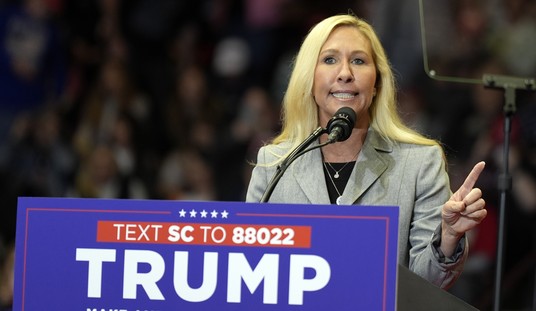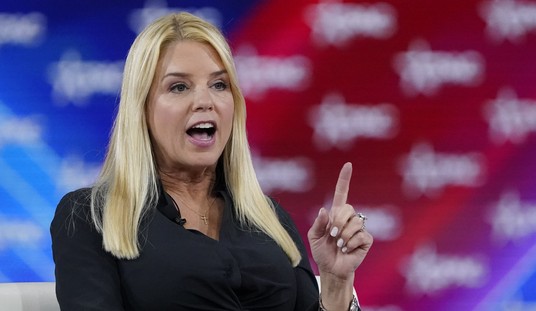Hillary Clinton is proposing a child care income tax credit – mainly to pay for daycare for working moms. There already is a credit in the tax code. Clinton would expand that subsidy by tenfold or more, leading to a massive, new entitlement. It would remove any incentive parents have to find more economical ways of meeting their children’s needs and it would subject working women to high marginal tax rates – penalizing them harshly for working more and earning more.
The conservative case against child tax credits. Before looking at the Clinton proposal, let’s consider the case against all such subsidies. Federal tax and spending policies are incredibly kind to children. In general, virtually every welfare program – especially for single mothers -- is more generous, the more children the mother has. For the poor and the near poor, there are, for example, Food Stamps, housing vouchers, income supplements, Medicaid and CHIP, the earned income tax credit, etc.
Then there are the public schools. Virtually every child in the Dallas Public School System is participating in the school lunch program. In addition to lunch, school districts around the country are
Anyone can get in financial difficulty because of unforeseen events. But it could be argued that entire neighborhoods have adopted a lifestyle that would not have been possible without government. It appears that millions of people are having children they know in advance they cannot afford to feed and the welfare state is simply enabling – perhaps encouraging — the spread of government-dependent, single parent households along with all the social problems that lifestyle engenders.
The conservative case in favor of child tax credits. Given the existence of single women with children, a modest tax credit is unlikely to encourage mothers to have any more of them. But it could do something that conservatives should like. It could encourage women to enter the labor market and become self-supporting. Moreover, while in the labor market, these women would be working and paying taxes – giving the government a return on its initial tax break.
Recommended
But isn’t this a special subsidy – inconsistent with sound tax policy? Actually, no. The tax law has always treated work at home differently from work in the marketplace. Work for pay in the labor market is taxed while work at home is not taxed, even if the activities are exactly the same. The law leaves you alone if you clean your own home. But it taxes you if you clean your neighbor’s home for pay. It leaves you alone if you take care of your own children. But it taxes you if you take care of your neighbor’s children for a fee.
So a child tax credit could be viewed as a way of leveling the playing field. It removes some of the tax law’s natural bias against work for pay.
In a 1989 study for the National Center for Policy Analysis, economist David Henderson called the child credit a “supply side success story.” Henderson estimated that:
· The child care tax credit at the time was costing the federal government $4 billion a year; but because of the influx of women into the labor market induced by the credit, the national output of goods and services increased by more than twice that amount.
· Further, 89 percent of the cost of the program was returned to the government in the form of work-related taxes.
· And, among middle- and high-income women, it seemed likely that the government was making a “profit” on the deal – getting more back in new tax revenues than it spent on the credit.
The current tax credit. Under current law, parents can claim up to $3,000 per dependent in child care expenses. They can get a dollar-for-dollar tax credit for a portion of these expenses, depending on their income. The lowest income workers get 35 percent. The percentage decreases to 20 percent as income rises. The maximum credit in dollar terms is $1,050 per child. In addition to children, the credit may also be claimed for other dependent family members.
Problems with the current credit. There are three problems with the current system. First, the amount of the credit is too puny. Forget what formal day care actually costs. If we are getting anywhere near the economic responses estimated by Henderson, we should invest even more in these types of credits. Second, the credit should not decline as income rises. This raises marginal tax rates for middle- and higher-income women – penalizing them for earning more. And remember, these are the women workers for whom the government is probably getting its best “return.”
Finally, the law requires that the care giver have a tax ID – meaning that the care arrangement has to give rise to taxable income. The parent has to produce receipts verifying that payment was made.
Suppose a mother relies on a non-resident father or another child or some other relative to deliver the care on a non-paid basis. There is no tax credit. Suppose there are two mothers living side-by-side – one with a day job and the other working as a night nurse. Imagine that each mother agrees to take care of all the children while the other mother is working – a sort of barter arrangement. There is no credit.
These are arbitrary restrictions that appear to prevent mothers from opting for the best care and the least expensive care. If the credit is justified by its supply side responses, it shouldn’t matter what the mother does with the money.
Clinton’s proposal doubles down on the negative aspects of the current credit. The Hillary Clinton tax credit certainly won’t be puny. Describing the proposal in the Washington Post, Danielle Paquette writes, “The average annual price of daycare for infants … is now higher than that of a year of public college in two-thirds of states. Parents can expect to pay $16,500 in Massachusetts, $11,628 in California and $12,500 in Illinois, according to Child Care Aware of America.”
Clinton is apparently willing to have the federal government pay these prices, restricting the family’s share to no more than 10 percent of their income. Take a Massachusetts mom with three children, earning, say, $10,000 a year. In return for paying $83 a month she could enroll her children in daycare costing almost $50,000!
And notice that once she pays her $83, she has no incentive whatsoever to find more economical daycare.
Moreover, the 10 percent cap would add 10 percentage points to the marginal tax rates of working families. Every time they earn a dollar they would lose 10 cents in daycare subsides. If the subsidy is phased out “progressively,” as it does in a Center for American Progress proposal, it will add 17 percentage points to the marginal tax rate – putting average income households in a tax bracket similar to the one faced by Bill Gates.
Clearly this idea needs to go back to the drawing board.
























Join the conversation as a VIP Member